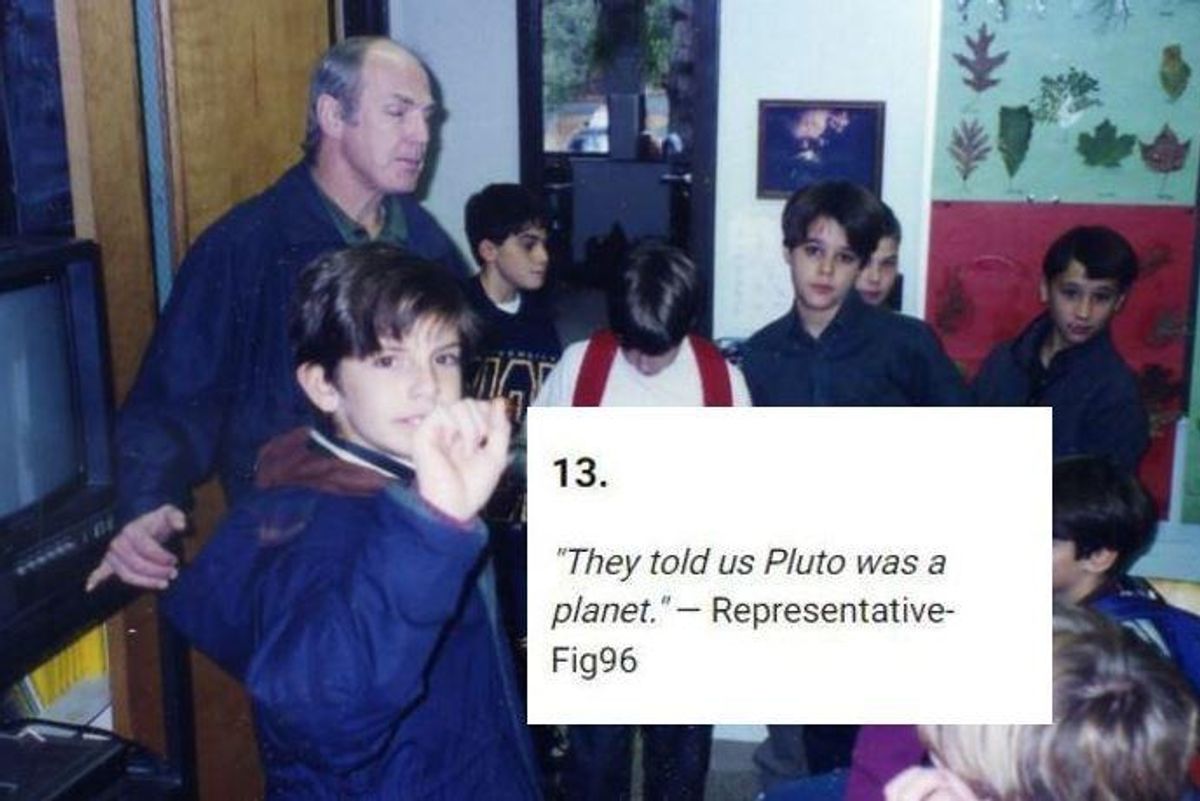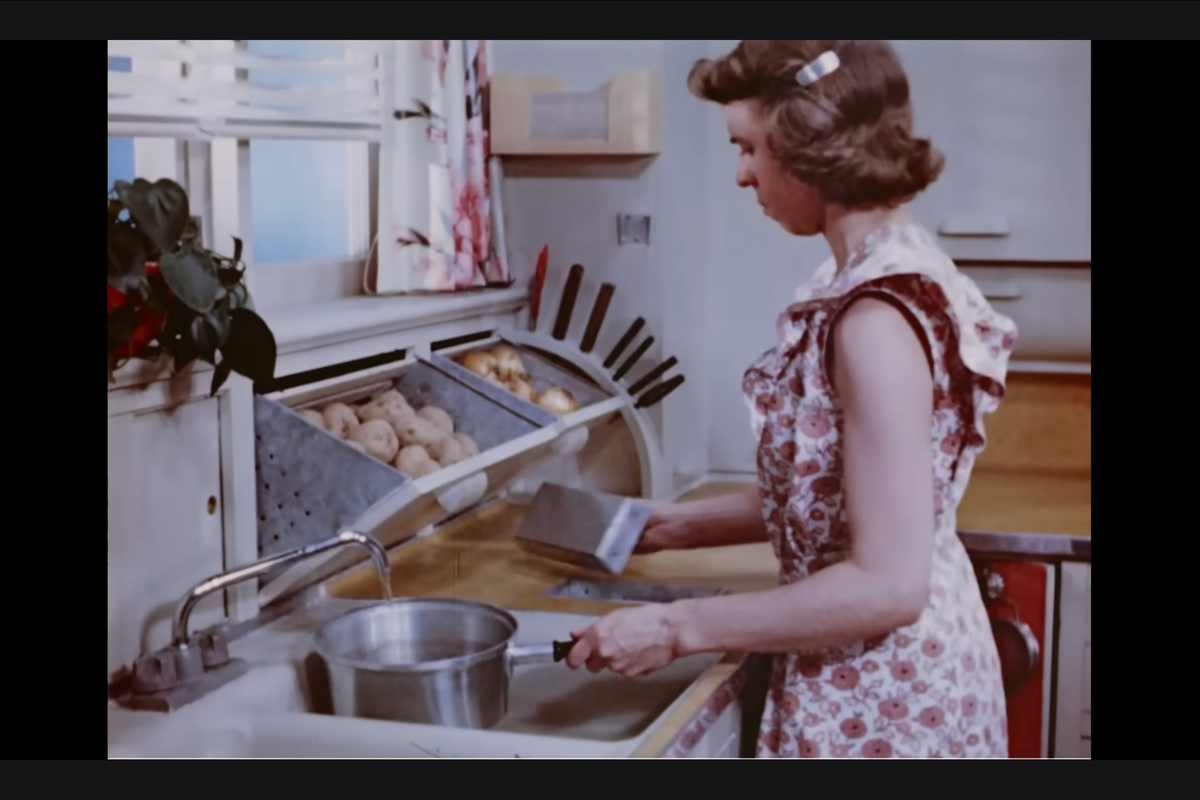People are sharing things teachers did in the '80s and '90s that would 'never fly' now
Students and teachers had different relationships back then.

Eaglebrook School, Deerfield, Massachusetts.
The typical kid’s experience in school is a lot different today than it was 30 to 40 years ago. It’s hard to say whether things are better or worse, but there’s been a sea change in how children are raised.
One negative development is that teachers tend to think parents are more likely to side with their kids over faculty in disputes than they were decades ago. On the positive side, corporal punishment is on the decrease, so students are much less likely to be physically punished for breaking the rules.
A Reddit user with the username u/theSandwichSister asked the ‘80s and ‘90s kids on the forum, “What’s something a school teacher did to you that would not fly today?” A lot of the responses were about the type of physical punishment and humiliation that used to happen in schools that would never happen these days.
There were also a lot of posts about teachers who smoked around their students. Can you imagine a kindergarten teacher lighting up in front of their students these days? They’d be fired in a flash.
Overall, the responses show that schools are a lot more concerned with the mental and emotional health of their students these days, which is a wonderful improvement. Schools also seem to be much more friendly environments to students who are people of color, LGBTQ or have disabilities.
Here are 17 of the best responses to the question, “What’s something a school teacher did to you that would not fly today?”
1.
"Not a teacher, but school one. If you read enough books during the year in elementary school you got to have a sleepover in the library. Like we brought sleeping bags and slept on the floor. In the morning they had griddles out and we made pancakes. I know, total nerds, but it was my favorite elementary school memory." — 7askingforafriend
2.
"My elementary school principal would pull loose teeth. You could go to his office, have him pull your loose tooth and he would give you a lollipop." — snowfuckerforreal
3.
"I told my biology teacher that I wasn't feeling too well, he said that I didn't look sick, and as punishment made me stand in the corner until I fainted." — AustrianReaper
4.
"In high school, we would sometimes play knee soccer which was in our wrestling room (wall to wall wrestling mats) and was really just handball but on our knees. The PE teacher (football coach) let us play rough since it was an all male class and we were on our knees and couldn't do too much damage. During the game, two of the students were grappling for the ball and as these things go, one of them accidentally knocked the other a little too aggressively. The kid that got hit (an known asshole of the school) got pissed and stood up and kicked the other kid.
The PE teacher (225lb jacked military hair cut) stormed over and shoved the kid who flew about 10 feet before crashing to the ground. The kid gets up ready to fight whoever shoved him and the teacher had closed the gap and started screaming at him. Then the teacher lectured the entire class about sportsmanship and honor. The teacher never got in any trouble." — hangingonwith2fingers
5.
"In 5th grade, I was called to the office at my public school. I was a goody two-shoes so I had no idea why I was called, so I started tearing up thinking something bad must've happened to my family. Eventually, I was ushered into a room as my two best friends left. The principal and 2 other staff members then sat me down and showed me a piece of paper. It was a silly poem I wrote one of my friends about a good witch who granted wishes by mixing together some mundane ingredients. Apparently, their mother found the poem and complained to the school. Their response was to interview my friends about MY RELIGION." — ktbunny
6.
"6th grade teacher Ms. Sullivan would take 3 kids every Friday to McDonald’s for lunch. She was cool as hell. Smoked during the drive and everything." — SigP365SAS
7.
"My 3rd grade teacher had the whole class camp in her backyard after the last day of school. She took us to see the original TMNT movie in the theater, then we stayed up late telling ghost stories. One of my absolute fondest memories." — Cambot1138
8.
"Yeah, there are a lot of negative things in this thread, which makes sense, but there are some 'cool teacher' things that we lost too. I got a ride home from school once from a male teacher in middle school (I'm female) when it was pouring rain and my mom wouldn't come get me, but I bet that's not allowed these days." — rabidstoat
9.
"English teacher in high school used to cuss kids out for being noisy in class and if that didn't work, he'd throw the blackboard eraser at us. I wasn't on the receiving end of the eraser. That chalk would leave marks on kid's backs for the rest of the day so everyone knew who pissed off Mr Charvet." — Roscoe_Cracks_Corn
10.
"7th-grade science class, the teacher walked around with a beaker full of mercury and told us to stick a finger in it to feel how dense it was. Then he gave us each our own penny-size drop of mercury to play with at our desks, so we could see how it moved. I’m sure we were poisoned that day. Nowadays if a thermometer breaks they clear the school." — weirdkid71
11.
"Not something done to me per se, but my 3rd grade teacher had a little office with a door inside our classroom, and she would smoke cigarettes in there while we were at lunch/recess." — HutSutRawlson
12.
"Cheese Day in the Midwest. It was in first grade. For an entire day, all you ate was cheese. Cheese puffs, curls, sticks, slices, balls, and Doritos. Drank orange Hi-C as well. For 10+ years, smelling that fake cheese made me gag. After her wedding, and the birth of her son, my sister says Cheese Day the best day of her life. Wasn’t Wisconsin either." — 2_Spicy_2_Impeach
13.
"They told us Pluto was a planet." — Representative-Fig96
14.
"Best math teacher ever made us say numerator/denominator in Schwarzenegger voices as we were learning fractions." — kittensington
15.
"High School, we were on campus, drove a van to the locker rooms because I was with The QB, Linebacker and a couple of linemen who needed to get crap from their lockers. We were drinking beer in the van, it was 1:30, the football coach sees us, stops the van, looks inside and sees the beer, and shook his head and told us to be careful and get off campus. I don’t think that would fly today." — kentro2002
16.
"A lot of people are posting bad stuff, so let me share a good one. In 9th grade, in 1984, I had a class analyzing lyrics in pop music. Students brought in records by Led Zep and John Cougar and we'd discuss what they meant. Seriously a life-changing class. It makes me sad that younger students in America are so caught up in the rat race that they never had experiences like that." — Adventuresphere
17.
"I had an awesome teacher who would send one of us to the shop (just a minute’s walk away) with enough money to get ice creams for everybody whenever it was hot and she didn’t feel like teaching." — wanderingsteph
This article originally appeared on 08.30.22
- 19 super-specific memories that are giving people instant childhood ... ›
- TikTok dad shares his 80s childhood and it's pure GenX - Upworthy ›
- Relive your '80s nostalgia with this vintage ABC promo video ... ›
- Man gives epic recaps of 90s movies and TV shows - Upworthy ›
- People share the stupidest things they've done to look cool - Upworthy ›
- Patrick Renna from 'Sandlot' dances to NFL theme songs - Upworthy ›
- There are over 30 years between these amazing before-and-after photos. - Upworthy ›
- Gen X mom has Gen Z daughter rank 90s heartthrobs - Upworthy ›
- What pop culture gets wrong about the 80s - Upworthy ›
- Teacher has perfect comeback to 'act like a teacher' comment - Upworthy ›
- American mom living in Japan shows her son's required school supplies - Upworthy ›
- 'Millionaire tax' in Massachusetts funds free school meals - Upworthy ›
- 90-10 rule can be the secret to a happy life - Upworthy ›
- Adults who lived through the 80s share 15 things pop culture gets wrong about that time - Upworthy ›
- Was the 90s the last 'great' era? Gen Xers share 8 reasons why the answer is a big fat 'no' - Upworthy ›
- Gen X mom shares explicit 90s songs with her teen daughter, and her reactions are priceless - Upworthy ›
- People share 19 everyday things from the 1990s/2000s that are now considered 'luxuries' - Upworthy ›
- Dad goes viral sharing how 90s parents handled entertaining kids in a totally different way - Upworthy ›
- Teacher jokingly challenges 10-year-old to 'find Duran Duran' while in England. She does. - Upworthy ›
- Someone criticized this teacher's out-of-the-box lessons. Her comeback was an A+. - Upworthy ›
- Adults who lived through the 90s share 15 things we all misremember about the decade - Upworthy ›
- Adults who actually lived through the '80s share 15 things pop culture still gets wrong about that time - Upworthy ›



 TikTok · Ale
TikTok · Ale
 Kittens are the cutest.
Kittens are the cutest.  Grrrr, wook at his widdle paws and his widdle whiskers.
Grrrr, wook at his widdle paws and his widdle whiskers. 

 Design 3D GIF
Design 3D GIF 
 Bluebells at the Brooklyn Botanical Gardens.
Bluebells at the Brooklyn Botanical Gardens. 